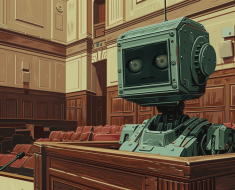Introduction
Remember how frustrating it was to ask your AI assistant about a recent event and get a blank response? Well, those days are over with the arrival of OpenAI’s GPT-4 Turbo. This next-generation AI model boasts a significant upgrade in its knowledge base, leaving behind the limitations of previous models that stopped learning around September 2021.
The culprit behind the outdated knowledge was a pre-defined “cutoff date” in the training data. This meant AI models like GPT-4 could only access and process information fed to them before that date. GPT-4 Turbo breaks this restriction by incorporating information up to December 2023, allowing it to stay current with factual topics and trends.

GPT-4 Remember Everything You Said? Massive Context Window Explained!
Imagine having a conversation where you can reference things you mentioned hours ago, and the other person remembers everything perfectly. That’s the potential unlocked by GPT-4 Turbo’s massive context window. This refers to the amount of information the model can store and consider during a conversation. Previous models like GPT-4 typically had a context window measured in tokens, representing roughly 32,000 words. This meant that conversations exceeding that length could lose coherence as the AI “forgot” earlier parts of the discussion.
Here’s where GPT-4 Turbo shines. It boasts a significantly larger context window, reaching a maximum of 128,000 tokens – roughly equivalent to 96,000 words. This allows for far more nuanced and extended conversations. You can delve into complex topics with back-and-forth references or have a lengthy storytelling session without the AI losing track. This extended memory fosters a more natural flow of conversation, making interactions with GPT-4 Turbo feel more human-like.
Here is the official Tweet by OpenAI with GitHub Link:
From Text to (Almost) Human
The communication experience with GPT-4 Turbo isn’t limited to text alone. The model incorporates advancements in text-to-speech technology, aiming to bridge the gap between human and machine interaction.
This suggests that GPT-4 Turbo might be able to deliver responses with a wider range of inflections and tones, mimicking the nuances of human speech. Imagine an AI assistant who can answer your questions accurately and deliver the information engagingly and conversationally. This paves the way for more natural and immersive interactions between humans and AI systems.
OpenAI’s Copyright Shield Protects Developers (and You!)
AI creation is constantly evolving, and its legal landscape can be complex. One major concern for developers using AI models is the potential for copyright infringement, especially when the model generates creative text formats.
OpenAI acknowledges this concern and offers a safety net through its Copyright Shield program. This initiative aims to protect developers (and potentially end-users) from copyright lawsuits stemming from GPT-4 Turbo outputs.
This is a significant step towards mitigating risks associated with AI-generated content. It gives developers more confidence to explore the creative potential of GPT-4 Turbo, knowing they have some legal backup from OpenAI.
How GPT-4 Turbo with Vision Pushes the Boundaries of AI

GPT-4 Turbo isn’t just about improved conversation skills. The introduction of GPT-4 Turbo with Vision signifies a major leap in AI capabilities. This version integrates image processing alongside text analysis, opening doors to a wider range of applications.
Imagine an AI assistant that can answer your questions about a picture and analyze its content in detail. This could be invaluable in education, research, and daily life. For instance, students could use GPT-4 Turbo with Vision to gain insights from complex diagrams or charts within their textbooks. Researchers could leverage its capabilities to analyze scientific data presented visually. Everyday users might find it helpful to identify objects in a photo or understand the information presented on signs or packaging.
Conclusion
Technical advancements and developer-focused features might dominate the conversation surrounding the GPT-4 Turbo. However, it’s worth considering how this technology might trickle down to everyday users.
Imagine AI assistants like Siri or Alexa with enhanced conversational abilities and up-to-date knowledge of GPT-4 Turbo. Daily tasks and searches could become more efficient and informative. Additionally, the potential of GPT-4 Turbo with Vision for image analysis could find its way into smartphone apps, making tasks like information retrieval from physical documents or understanding complex visuals even easier.
While the exact timeline remains to be seen, GPT-4 Turbo’s advancements can significantly impact how regular users interact with technology and access information in the future.
Stay ahead of the game! Discover the latest updates and innovations in GenAI tools now. Click here to explore how these cutting-edge technologies can transform your projects and workflows. Don’t miss out on the future of AI—learn more today!





